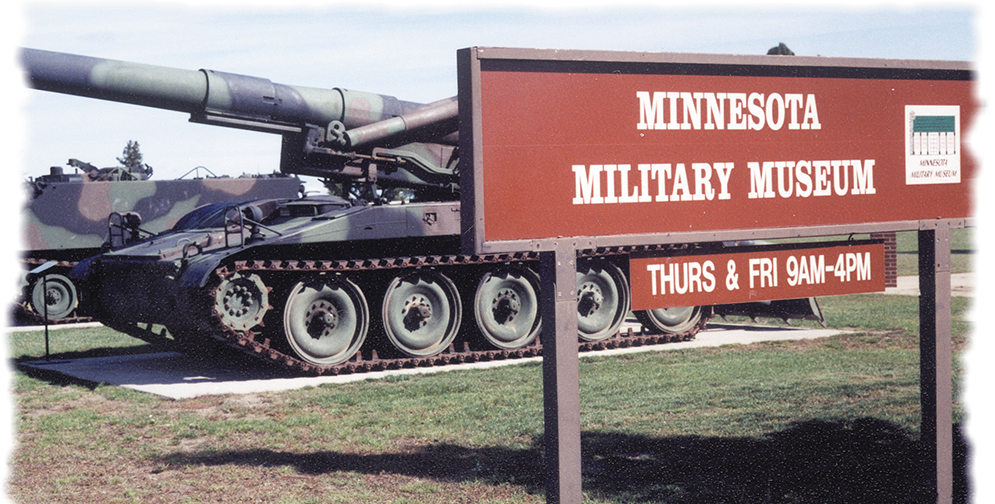By Lee Arten
A row of tanks always gets my attention, and the tanks parked outside the Minnesota Military Museum were no exception. Behind the tanks were artillery pieces, helicopters, a light plane and the museum building. Inside the building was the place I thought might interest me most: The Arms Room.
The Minnesota Military Museum is at Camp Ripley, a 53,000 acre National Guard training area in the center of the state, seven miles north of Little Falls. The site was first used for troop training in 1931. My father, Oliver Arten, who grew up in Minneapolis, spent five months at Camp Ripley in the Civilian Conservation Corps (CCC) in 1933. He lived in a mess hall, cut trees and built fences. As we drove through the large stone gate and down a couple of streets to get to the museum, I wondered if any of what I saw would look familiar to Dad.
The museum was started in 1977 by active duty and retired National Guard officers and enlisted personnel. The idea had been under discussion for a while but in 1977 the group contacted the Adjutant General of the Minnesota National Guard, Major General Jim Sieben, and the Minnesota Historical Society about establishing a museum. General Sieben was enthusiastic and offered to have Camp Ripley house the museum and pay the utilities. The historical society offered experience and advice on starting a museum. The Military Historical Society, a non-profit group, was formed and the current museum is the result.
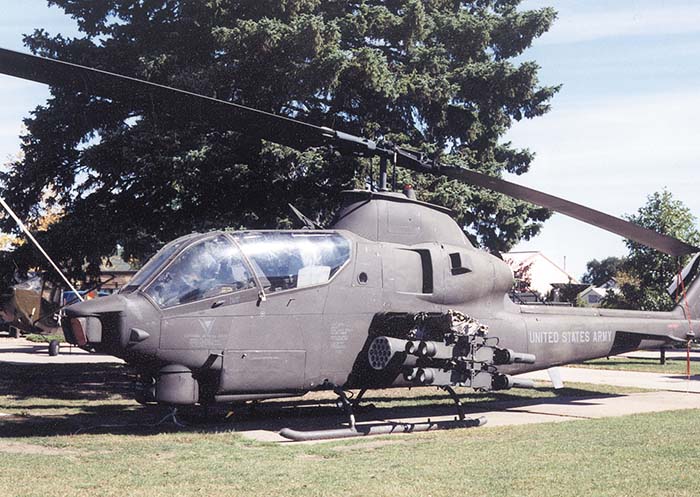
I spent some time looking at the tanks and the guns out front, but once inside I went almost directly to The Arms Room. A placard there states;
“One cannot understand military history without some awareness of the development of small arms—notably the rifle, pistol and machine gun.”
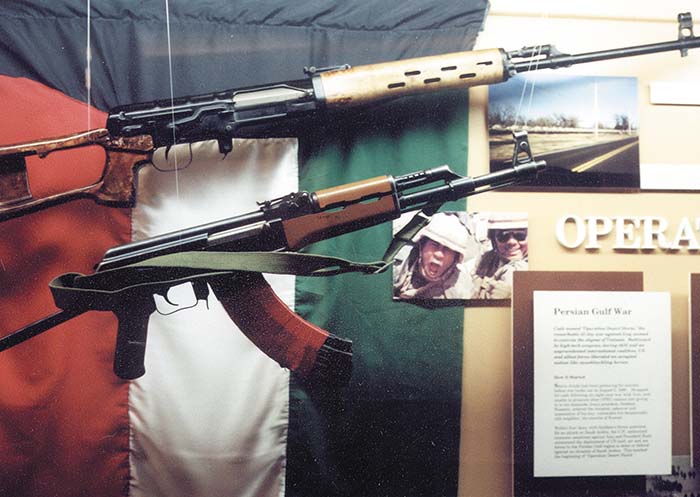
Specimens in the room give clear examples of that development. The earliest Arms Room exhibits date from the Indian Wars and the Civil War. World War I is well represented with German Maxims, British Vickers, M98 Mausers, 1903 Springfields and a Mauser Tank-Gewehr M1918.
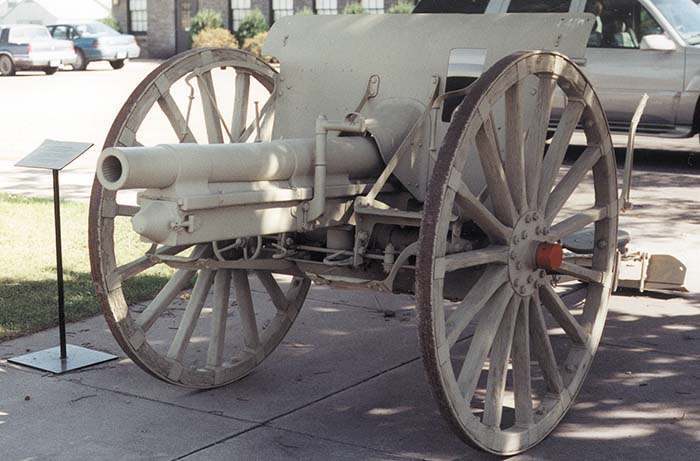
World War II subguns on display include the British STEn, German MP40, U.S. Thompson, an M3, and a PPsh. The battle rifle case holds an M-1, an M1 Carbine, an M-14, a couple of M16s, two AKs, an RPK and a BAR. Single shot and bolt action rifles from America’s wars are also displayed.
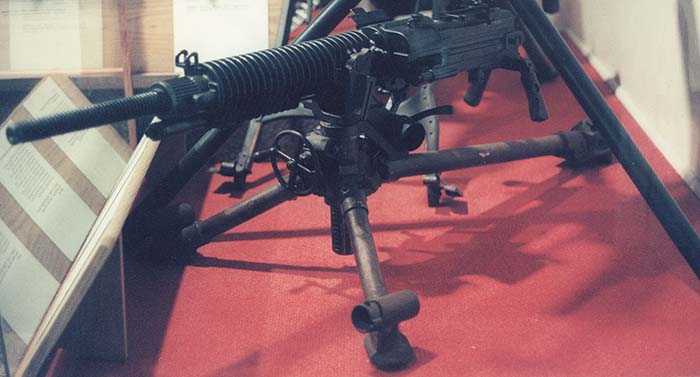
Several pistols I saw were interesting and unusual. One, a 1911 with adjustable sights, was the “personal weapon”of Major General Chester J. Moeglein. Another Colt, a 1903 in .32 ACP, was also donated by General Moeglein. A Spanish pistol, an Astra 300 or a lookalike, was displayed too. According to the card it was not a simple semiautomatic pistol, but could be made into, “a rudimentary submachine gun.” The card also said the pistol was only produced from 1934 to 1936. Other pistols of note included a Nazi-marked 1910/22 Browning.
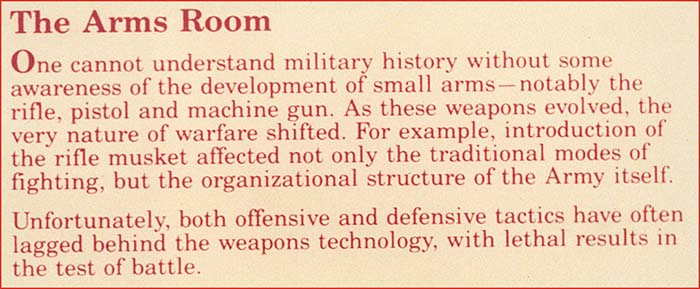
The museum is dedicated to preserving the military history of the State of Minnesota. Since the state has been involved in American conflicts since 1861, the exhibits also give a good history of America’s wars from then until now. Minnesota also has quite a record of military firsts. Museum Director David L. Hanson, Colonel USA Retired, ran down the list for me in an interview at the museum.
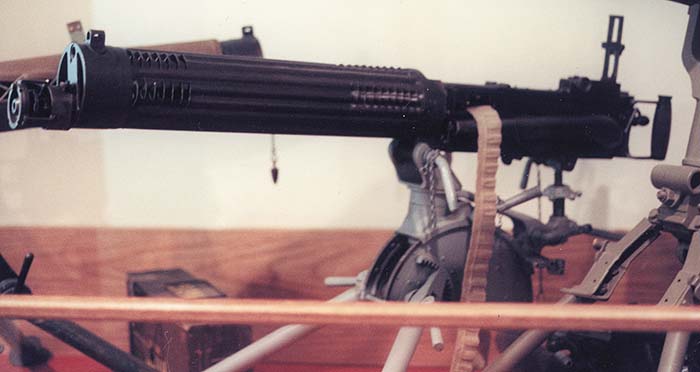
Minnesota was the first state to provide militia troops to Lincoln’s army in 1861. The first armor unit deployed for World War II was the 194th Tank Battalion from Brainard. It was sent to the Philippines in 1941 and was involved in fighting the invading Japanese army in a delaying action before the Philippines fell. Many of its men were on the Bataan Death March. On November 19, 1943 the first shell fired by American ground forces against the Germans was fired by Battery B, 175th Field Artillery Battalion of the 34th Infantry Division of the Minnesota National Guard at Medjez-El-Bab, Tunisia. Members of a Minnesota Naval Militia unit crewed a deck gun aboard the destroyer USS Ward. An hour before the attack on Pearl Harbor, the Ward and the Minnesota gun crew fired the first shot against the Japanese in Hawaii, sinking a two-man Japanese mini-sub that was trying to enter the harbor.
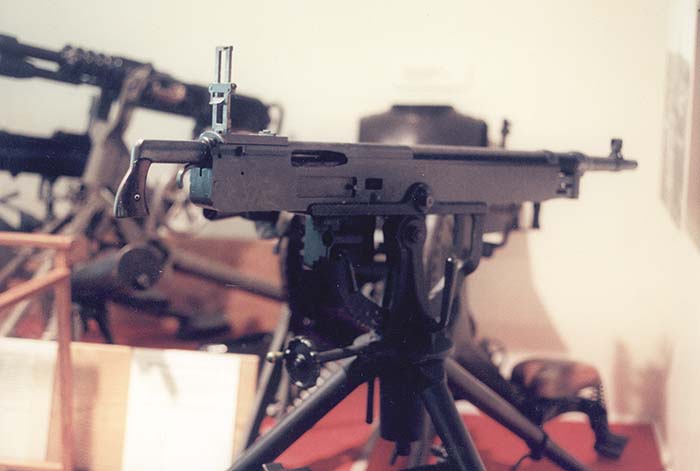
The museum also has material on General John W. Vessey, Jr. He enlisted in the 34th Infantry Battalion of the Minnesota National Guard in May of 1939, and received a battlefield commission at Anzio in 1944. After World War II, he stayed in the army and rose to wear four stars. He became Chairman of the Joint Chiefs Of Staff in June of 1982 and served in that position until October, 1985.
Exhibits, which include correct firearms and equipment for the times, cover The Indian Wars, The Spanish American War, World War I, World War II, Korea, Vietnam and Desert Storm. My wife and I thought the exhibits were well designed. Our kids are still a little museum-resistant after a family trip through Wisconsin, Minnesota, the Dakotas and a little of Montana two years ago. Say “Buffalo Hide Scraper made from a rifle barrel,” and they cover their ears and wail. All three of them—17, 15 and eight—seemed to have a good time at the Minnesota Military Museum. It didn’t hurt that there were no hide scrapers displayed, or that climbing was allowed on the tanks outside the museum.
Director David L. Hanson, Colonel USA Retired told me that the museum, “caters to the tourists during the season.” It is open from 10 a.m. to 5 p.m. Wednesday through Sunday from late May to early September, but closed on National Holidays. The rest of the year it is open Thursdays and Fridays from 9 a.m to 4 p.m. Tours for groups may be arranged by calling ahead. The suggested donation is $2 per adult with military personnel and children admitted free. Annual memberships start at $18. The Museum can be reached at (320) 632-7374, or by mail at Minnesota Military Museum, Camp Ripley, 15000 Hwy., 115, Little Falls, MN 56345. The email address is mnmuseum@brainerd.net., and there is a also information available on the Web through the Explore Minnesota website.
| This article first appeared in Small Arms Review V4N7 (April 2001) |



